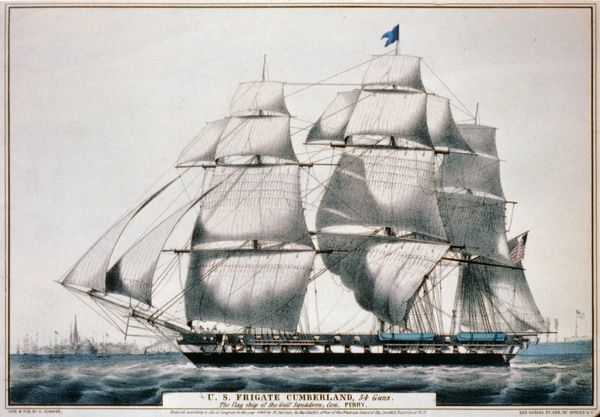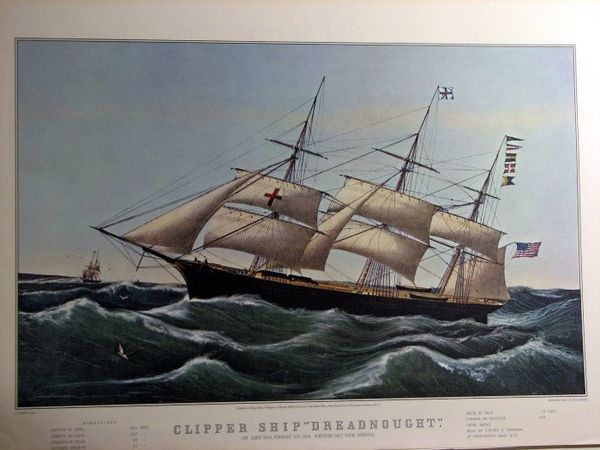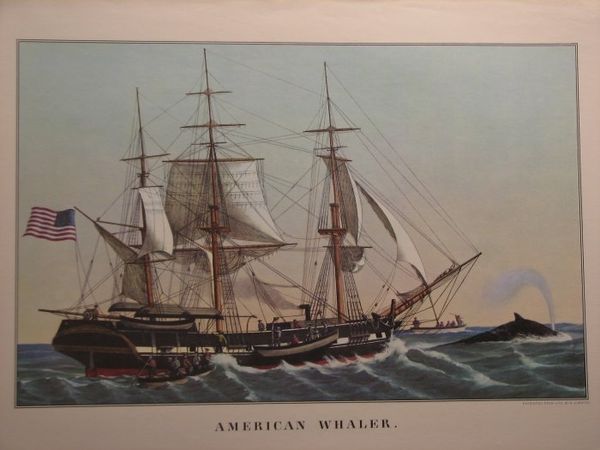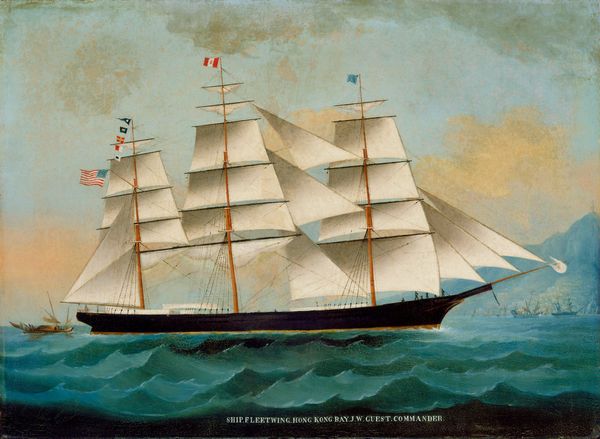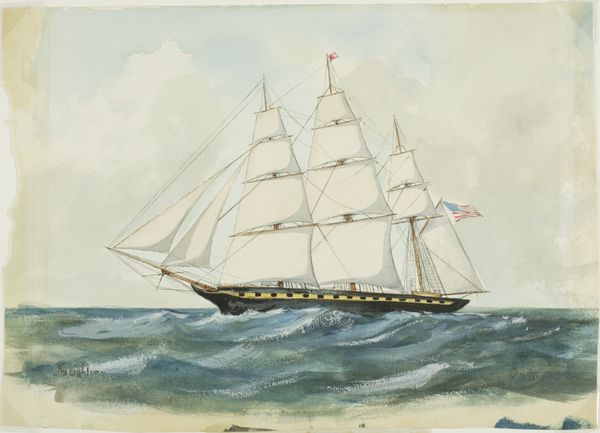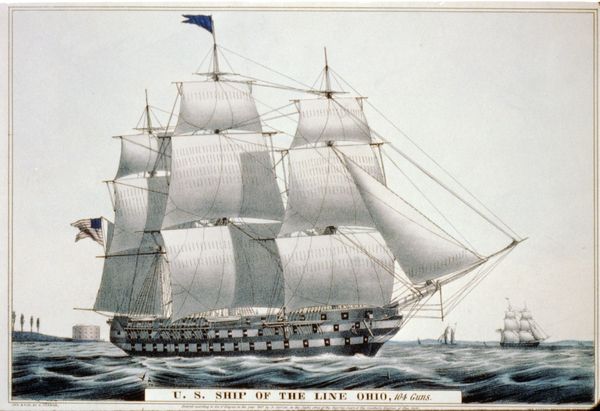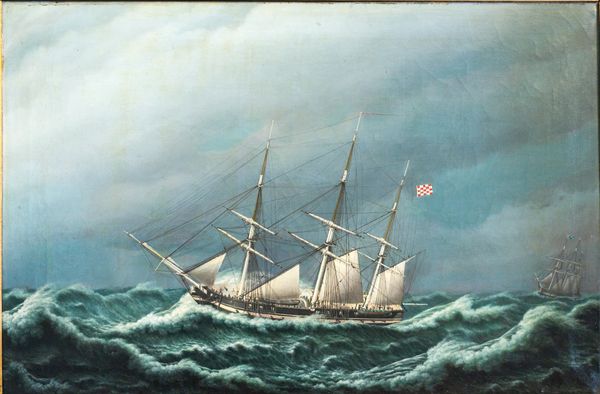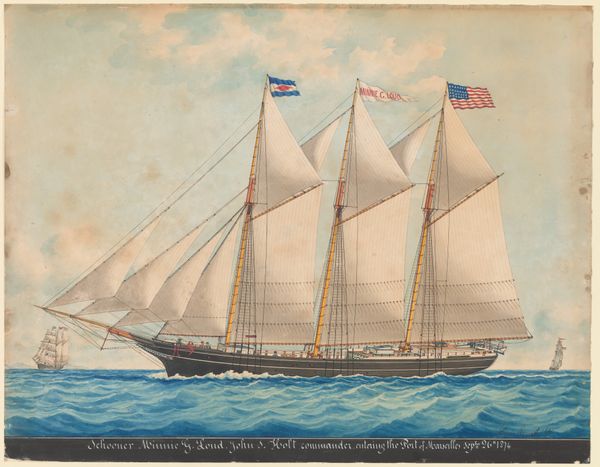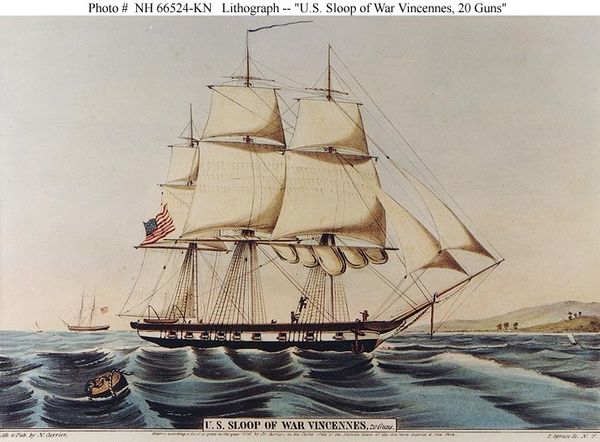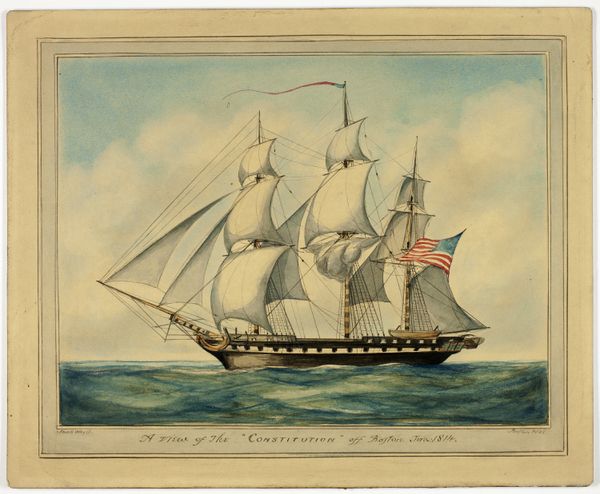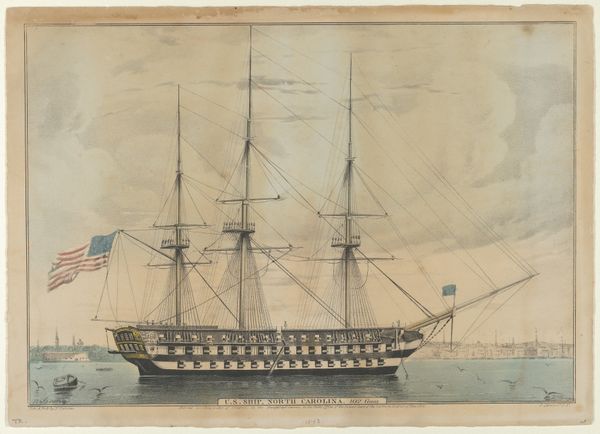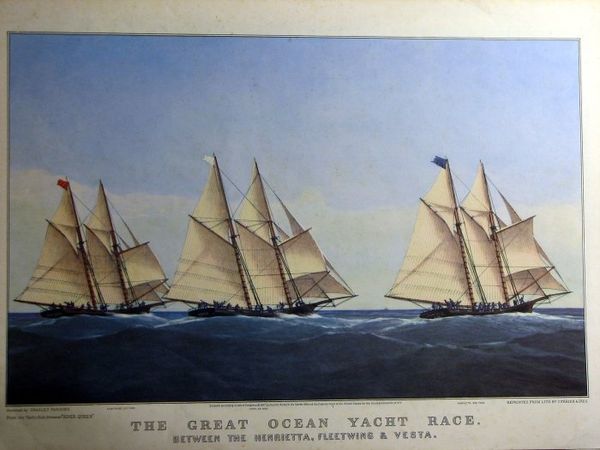
Copyright: Public domain
Curator: I find myself immediately drawn to the way the light reflects on the water's surface; there is a tangible weight to it. Editor: That’s an astute observation. The work before us, "The Miniature Ship Red, White, and Blue," is a lithograph created in 1866 by Currier and Ives, masters of mass-produced prints in 19th-century America. The materials themselves, the printing process—the layered inks and stones used—are all key to the feeling you are describing, aren’t they? Curator: Absolutely. Beyond the aesthetic, I wonder what a vessel such as this signifies within the context of post-Civil War America? Consider the romantic idealism embedded within such imagery—was it simply an innocent portrayal of maritime adventure? Editor: That’s what’s so compelling—diving into the societal currents that helped produce this artwork. One could argue that mass production and the consumption of these prints played a crucial role in shaping popular ideas of national identity in that era. These lithographs weren't meant for an elite audience; they reached a wide cross-section of American society. Curator: And the ship, what symbolic meaning would its presence have? It cuts through tumultuous waters with an unflappable certainty... Was the artist intending to express something regarding westward expansion, national progress, or Manifest Destiny? Editor: Think about how such prints were crafted, the labor, and the workshops where they came from, not only where but also who was doing the lithography? Curator: And what’s so moving about understanding the role and societal status these makers were bound to? The romantic brush strokes belie their very labor! Editor: It's a fascinating collision. This journey through process helps contextualize how maritime-themed imagery was integrated within the national ethos, shaping and reinforcing narratives of American ambition and identity. Curator: Truly! By looking through lenses of the artist, art worker, historical period, and present perception we better understand intersectional layers which define artistic canon. Editor: Precisely—the means of production, circulation, and consumption allows the viewer insight into social norms. Curator: Agreed! I'll never view this work the same way.
Comments
No comments
Be the first to comment and join the conversation on the ultimate creative platform.
